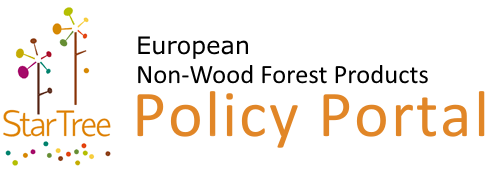Difference between revisions of "VAT reimbursement"
m (1 revision imported) |
(ids and related to) |
||
| Line 65: | Line 65: | ||
|Response set=Italy Instrument A6 - Agent 1 Pickers | |Response set=Italy Instrument A6 - Agent 1 Pickers | ||
|Related to=386 | |Related to=386 | ||
| + | |ID=589 | ||
}} | }} | ||
Latest revision as of 17:06, 18 September 2016
Description
Brief description of the instrument and its modus operandi
Any formally recorded entrepreneur can claim a certain percentage of the paid VAT according to the specie is producing. For instance a wild mushroom producer can claim the 100% of paid VAT (he/she pays 4% of the added value and he/she can claim back all); a beekeeper can claim a reimbursement of the 90% of the paid VAT (he/she pays 10% of the added value and he/she can claim back 90% of the payment); a wild game producer can claim back only the 37.5% of the paid VAT (he/she has to pay 20% of the added value and he/she can claim back the 37.5% of the money they paid)
Which problem the instrument is supposed to solve?
The main problem is the black market and the lack of income declaration; the taxation of certain products is quite high despite the reimbursement mechanism.
Purpose or main objective / overall goal of the instrument?
Reduce the fiscal pressure on “weak productions” in order to attract new entreprenaurs
Side objectives/goals of the instrument?
In theory increment of employment in the primary sector; in reality it has not been measured for NWFP
Which laws and regulations support the implement of this instrument?
Presidential Decree 633/72
The initiator/promoter of the instrument?
Initially it was pushed by the farmer associations
Which organizations are involved in the operationalization of the instrument?
Any company or embody that produce any type of value within the state; the minister of economy with its fiscal agencies within the state.
How the monitoring is ensured?
it is ensure by the national fiscal agency. The company have to show all the emitted invoices within six month after the end of the fiscal year (31st of December) and pay the whole VAT. The reimbursement occur within a year after the end of the claiming period.
How the compliance is ensured?
the compliance is based on the formal invoices emitted by the company, basic information for the income declaration
How is the overall performance of the instrument?
In general it stimulated the formation of micro and small companies, with some successful case on the honey and MAP sector.
Brief description of the context for the emergence of the instrument
Lack of entrepreneurship in the country and high divergence between the urban and rural development. The instrument allowed to enhance the
Have any of the items mentioned above changed since the instrument entered into force?
Yes
What are the main reasons or drivers behind changes mentioned?
the lobbing effect of certain association increase the number of species where the VAT reimbursement mechanism was considered.
Is there any qualitative or quantitative study of the impacts of the instrument?
No
Related to
• VAT reimbursement for NWFP producers (1970)
| Instrument | |
| Year | since the 70s |
|---|---|
| Affected actors | Picker/harvester/hunter, Processor |
| Products | Game, Berries, Fruits, Mushrooms/truffles, Nuts, Bark/cork, Other NWFP, Honey and Bee products |
| Countries | Italy |
| Regions (NUTS 2) | Trentino-South Tyrol |
| Geographical scope | National |
| Affected actors | Picker/harvester/hunter + and Processor + |
| Class | Instrument + |
| Countries | Italy + |
| Encodedname | VAT_reimbursement + |
| Geographical scope | National + |
| Lcname | vat reimbursement + |
| Name | VAT reimbursement + |
| Products | Game +, Berries +, Fruits +, Mushrooms/truffles +, Nuts +, Bark/cork +, Other NWFP + and Honey and Bee products + |
| Reference ID | 589 + |
| Regions | Trentino-South Tyrol + |
| Response set | Italy Instrument A6 - Agent 1 Pickers + |
| Year | 0070 <sup>JL</sup> + |
